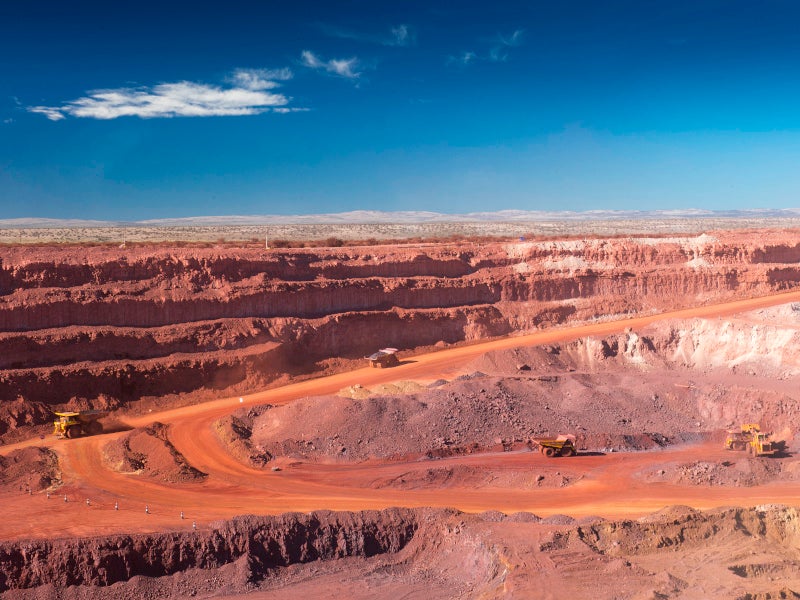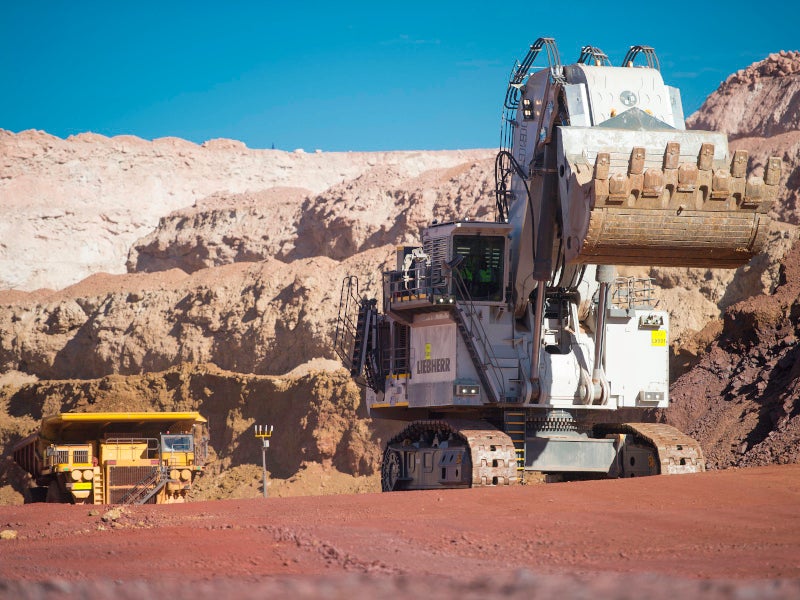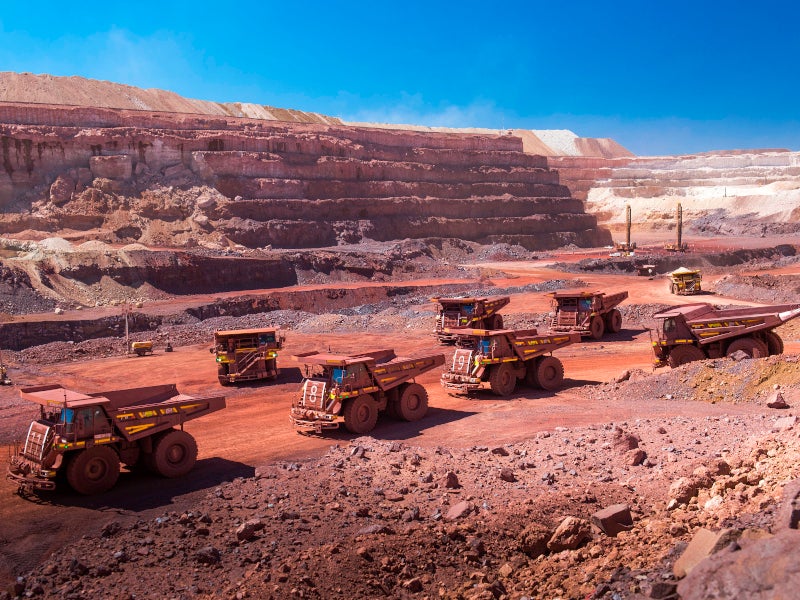The Kolomela mine is located 22km from Postmasburg in the Northern Cape province of South Africa. The mine produces direct shipping iron ore.
The mine is operated by the Anglo American group company Kumba Iron Ore through its subsidiary Sishen Iron Ore Company (SIOC). SIOC is 76.3% owned by Kumba while the remaining interest is held by Black Economic Empowerment (BEE) shareholders.
Anglo American holds a 64.7% stake in Kumba. Industrial Development Corporation holds 14% and the remaining is free float.
The mine consists of seven open pits, including Leeuwfontein, Welgevonden, Kapstevel and Klipbankfontein. It started commercial production in December 2011 and was awarded ISO 14001 certification in July 2013. Kolomela’s life is estimated to be 14 years, with potential for further expansion.
Development of Kolomela mine
Formerly known as the Sishen South project, the Kolomela mine project is a direct shipping iron ore project completed in late 2011. The project surpassed the expected full-scale production capacity of nine million tonnes per annum (Mtpa) in 2013.
The first impact studies of the project were carried out in 2001, although the exploration works for the project were undertaken in the 1950s.
The construction works of the R8.46bn ($933m) project started in mid-2008 and were completed by July 2011.
A revised mining plan was implemented in 2016, which included the cessation of mining at one of the pits. This resulted in a 4% increase in production and an increase in waste mining to 45.7Mt.
Production at the mine increased by 9% following the implementation of the company’s Operating Model in 2017. The model follows a phased implementation beginning at the project set-up phase and terminating with the stabilisation and sustaining phases.
The mine was granted approval for an application to expand its current mining operations within the adjacent Heuningkranz area in 2018.
An infrastructure upgrade was undertaken at the mine’s dense media separation (DMS) plant in 2019, along with a drill performance improvement project.
Kolomela mine geology and ore details
The Kolomela mine comprises three separate ore bodies located on the southern tilt of the iron bearing belt that hosts the Sishen deposit towards the north. The lithologies are identified to be of Griqualand West Supergroup. The ore bodies delineate the western margin of the Kaapvaal Craton in the Northern Cape province.
The ore bodies measure up to 2km in length, 400m in width and 300m in depth. The deposit consists of four varieties of high-grade haematite ores, namely clastic-textured (29%), laminated (53%), collapse breccia (10%) and conglomeratic (8%). The lump to fine ratio of the ore is 60:40.
Iron ore reserves
The estimated ore reserves stood at 159.3Mt grading 63.7% Fe as of 31 December 2019. The reserves comprise 103.9Mt of proved reserves grading 63.5% Fe and 55.4Mt of probable reserves grading 64% Fe.
Production declined by 5% in 2019 to 13.2Mt, compared to 13.9Mt in 2018.
Iron ore mining and processing at the mine
The mine employs the conventional open-pit mining method involving drilling, blasting, shovel-and-truck loading and hauling.
The extracted ore from the mine is sent to the nearby processing plant. The ore undergoes primary, secondary and tertiary crushing at the plant. The crushed ore is scalped and screened before being sent to the stockyard.
The mine has a stacker-reclaiming facility, at which different grades of processed ore are blended to ensure the grade requirements of the clients. Sishen mine’s products are also blended with the mine’s products before the final shipment of the ore.
The export ore is sent via a conveyor to the load-out terminal of the mine. From there, it is transported via the newly constructed 36km rail line linking the Sishen-Saldanha export line connected to the Saldanha Bay Port.
A fatigue centre designed to provide facilities for fatigue breaks was completed at the mine in 2013. It is expected to reduce fatigue and workplace incidents.
Contractors involved
Hatch was awarded the R2.5bn ($276m) engineering, procurement, project and construction management (EPCM) contract for the project. The company was responsible for delivering the crushing and sizing plant, stockyard facilities, as well as the rail truck loading station.
Murray & Roberts Construction unit Concor Roads & Earthworks carried out the earthworks, as well the construction of a new railway line connecting the iron ore mine with the Sishen-Saldanha export line. It also received several other contracts in 2012 for additional construction works of the project.
The drilling contract for the mine was awarded to Master Drilling.














